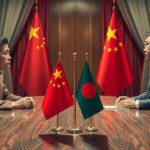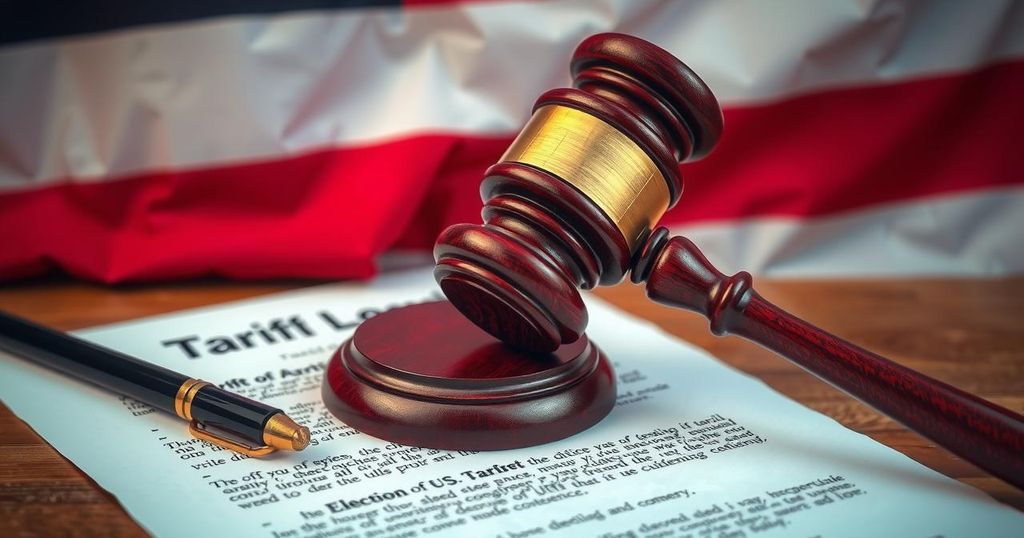Politics
ASIA, BANGLADESH, BEIJING, BILATERAL TRADE, CHINA, CHINESE, DEFENCE, DEVELOPMENT PROJECTS, DHAKA, DWIVEDI, ECONOMIC ZONE, GEOPOLITICS, INDIA, INDIAN ARMY, INDUSTRIAL ECONOMIC ZONE, IS, ISI, ISLAMABAD, MEXICO, MONGLA, MONGLA PORT, MUHAMMAD YUNUS, NEW DELHI, NORTH AMERICA, PAKISTAN, PR, SOUTH ASIA, SUPPLY CHAIN, TRADE, UPENDRA DWIVEDI, VE
Sophia Klein
Exploring Defence Ties: Indian Army Chief Meets Bangladesh High Commissioner Amid Rising Concerns
Indian Army Chief General Upendra Dwivedi and High Commissioner to Bangladesh Pranay Verma met to discuss defense cooperation. However, Bangladesh is simultaneously strengthening ties with China and Pakistan, which raises concerns for India regarding regional stability and security. Recent military engagements signal a disturbing shift in Dhaka’s geopolitical orientation.
On March 31, 2025, Indian Army Chief General Upendra Dwivedi met with Indian High Commissioner to Bangladesh Pranay Verma to discuss the bolstering of defense ties between India and Bangladesh, amidst concerns over Bangladesh’s growing collaboration with China and Pakistan. Despite the amicable diplomatic gestures, the backdrop revealed significant developments in Dhaka’s foreign relations that could shift regional power dynamics.
During their encounter, Verma and Dwivedi emphasized enhancing bilateral defense cooperation and joint initiatives, underscoring India’s apprehension regarding Bangladesh’s simultaneous agreements with China for economic and technical cooperation. Additionally, Bangladesh’s re-engagement with Pakistan’s intelligence agency, the ISI, marked a worrying trend for India, as such meetings had not occurred in over a decade.
Bangladesh’s interim government, led by Chief Adviser Muhammad Yunus, has secured substantial investments from China totaling $2.1 billion, which is essential for the nation amid economic fluctuations. Chinese enterprises committing $1 billion and Chinese financial undertakings for infrastructure developments are pivotal elements that signify China’s increasing foothold in Bangladesh.
In a noteworthy revival of military ties, Pakistani ISI representatives met with Bangladesh’s military officials, reflecting a strategic calculus that could elevate Pakistan’s influence in Dhaka. Recent military discussions and visits underscore a burgeoning partnership between the two nations, raising alarms in New Delhi.
The political landscape in Bangladesh has been shifting, especially concerning the balance of secular governance under Sheikh Hasina versus rising Islamist extremist elements. After Hasina’s departure, there have been increased attacks on minority groups, giving rise to concerns about the nation veering toward instability and potential militancy, with Pakistan’s involvement further exacerbating these fears.
Pakistan may be seeking to exploit these dynamics to regain influence, as evidenced by their intelligence-sharing framework that could enhance security ties with Bangladesh. Such developments pivot the geopolitical scenario, engendering a potential nexus between China, Pakistan, and Bangladesh, which signals trouble for India and may embolden anti-Indian militancy in the region.
India faces complex challenges with Bangladesh’s pivot towards Chinese financial aid and Pakistan’s military support. With a lengthy border that has historically been vulnerable to infiltrations, India is rightfully concerned about the resurgence of militant groups with past ties to Pakistan, raising questions about the future stability of its eastern border.
In conclusion, the recent discussions between Indian and Bangladeshi military leaders, juxtaposed against Bangladesh’s strategic alliances with China and Pakistan, highlight significant shifts in regional security dynamics. Growth in Chinese investment and rejuvenated ties with Pakistan amplify India’s security concerns, particularly regarding the potential resurgence of anti-India militancy. The geopolitics of South Asia may face a critical transformation as Bangladesh’s interim government leans towards these partnerships, necessitating closer monitoring from India.
Original Source: www.republicworld.com








Post Comment